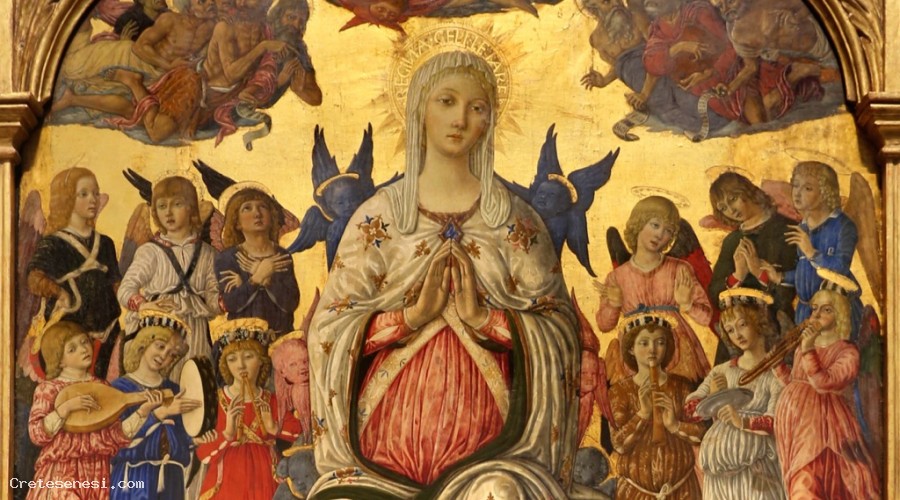News & events
How many treasures did the Millennial Collegiate have?
ASCIANO - The restorations of 1883 started a process of selling works of art
The discoveries or the rediscoveries of the long history of the one that was born, about a thousand years ago in the vicinity of the walled village of Asciano as Pieve di Sant'Agata, are many.
One that immediately attracts your attention is that of the wealth of works of art that it must have contained at least until the Baroque era, when only on the side walls of its large Gothic hall were there seven altars, completely dismantled in occasion of the restoration work begun in 1883.
That first major restoration that the church underwent to be structurally consolidated was one of the occasions for the dismantling and alienation of some works.
From the news that has come down to us, it is clear that the costs of making the church reachable and of its internal redevelopment by Partini must have been very substantial.
Hence, perhaps the need to finance the works by selling works that are available and currently not used. A story that re-emerged on the occasion of the RENASCIMENTO SENESE exhibition, held in London in the first half of 2007, is particularly significant.
On that occasion, the Museum of Palazzo Corboli, sent two side shovels of a triptych, in the center of which there was originally an ASSUMPTION OF THE VIRGIN, painted by Matteo di Giovanni, the same author of the side shovels.
The altarpiece of the Assumption, however, was already in London, because it was regularly purchased in 1884 and to show all the original triptych in its splendor, the loan of the side shovels to Palazzo Corboli was requested.
From this event a surprising story emerges, perhaps only for non-experts: the triptych, created for the church of Sant'Agostino, was reassembled with the Assumption of the Virgin by Giovanni di Paolo, from a polyptych of the Collegiate.
Evidently, the value or commercial interest in the Assumption of Matteo di Giovanni suggested this replacement by guaranteeing fresh resources for the works in Sant'Agata.
The story ends with the placement in the National Pinacoteca of Siena, of the side blades of the polyptych from the Collegiate, from which the central blade of the Virgin of John of Paul had been removed.
IN THE PHOTO: The Assumption of the Virgin by the National Gallery of London.